Class 8 Science Chapter - 8 Cell - Structure & Functions Notes, Previous Year Questions & NCERT Solutions
Class 8 Science
Chapter - 8
Cell - Structure & Functions
Notes, Previous Year Questions & NCERT Solutions
--Notes--
A Cell is the basic Structural, Functional, and Biological unit of all known Living Organisms. A cell is the Smallest Unit of life that can replicate independently, and cells are often called the "Building Blocks of Life".
Discovery of the Cell

Figure1: Robert Hooke discovered cells in 1665.
Hooke saw honeycomb-like structure when he observed thin slices of cork under a microscope. He noticed that each box was separated from the other by a partition or a wall. He was the one to name each of these boxes as cells.
*Cork is a part of the bark of a tree.
Scientists could study cells of living organisms only when improved microscopes with high magnification were invented – 150 years after the Hooke first observed the cells. In 1830s, two German scientists called Matthias Schleiden and Theodor Schwann proposed the Cell Theory which stated:
All living organisms are made of cells.
Cells are basic structural or functional units of living organisms.
All cells are born out of pre-existing cells through cell division.
The Cell
While cells are often referred to as 'bricks' making up a building, cells are complex living structures that can have a variety of shapes, sizes and functions.
Did you know?

Figure 2: An egg of a hen is a single cell which can be seen by the naked eye.
Organisms Show Variety in Cell Number, Shape and Size
To study cells, scientists use microscopes to magnify them. They often use stains (dyes) to colour parts of the cell and study them in detail.
Number of Cells

There are billions and trillions of cells in a tall tree or a large animal. A human body also has trillions of cells which have different shapes, sizes and functions.
Organisms can be of two types:
Multicellular Organisms are made up of more than one cell. For Example, Mango Tree and Frog.
Unicellular Organisms are made up of a single cell. For Example, Amoeba and Paramecium.
Did you know?
Multicellular organisms with billions of cells also start their life as a single cell. The fertilised egg (which is a single cell) multiplies to form more cells as the organism develops.
Single-celled organisms also perform all the necessary life functions like multicellular organisms, including:
ingestion and digestion of food,
respiration,
excretion,
reproduction, and
growth.
The only difference is that while a single cell performs all the functions in the unicellular organisms, multicellular organisms have a specialised group of cells to perform different functions. The specialised cells form tissues, which in turn form organs.
Shape of Cells
Amoeba, which is a single-celled organism, does not have a definite shape. Its shape keeps changing as it moves or feeds, protruding parts of its body to form 'pseudo' (meaning 'false') 'podia' (meaning 'feet'). These projects are known as pseudopodia.
Humans have millions of cells, such as white blood cells (found in blood), cells that make up muscles, and cells that form nerves. Their shapes vary according to the functions they perform.
Most cells are round, spherical or elongated. Some are spindle-shaped which are long and pointed at both ends. Nerve cells or neurons are quite long and are branched out to receive and transfer messages.
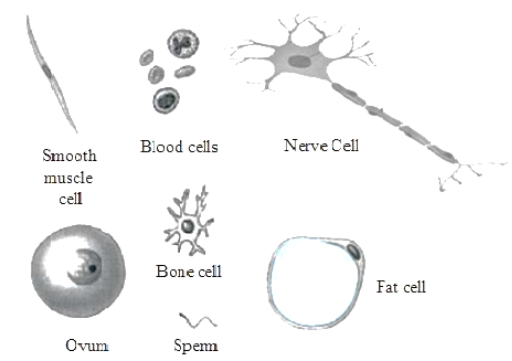
Figure 3: Different shapes of human cells
Shapes of the cells are maintained by a covering called Cell Membrane or Plasma Membrane.
Bacterial cells and plant cells have an additional rigid covering called a Cell Wall.
Size of Cells
The size of the cells may vary from a millionth of a metre (known as a micron) to a few centimetres but most of them cannot be seen with the naked eye. We need microscopes to see these microscopic cells.

It is not necessary that the size of cells of a large animal (such as an elephant) will be larger than cells of a small animal (such as a rat). The size of the cell depends on the function it performs. For example, nerve cells of a rat and nerve cells of an elephant perform the same functions and hence, are of the same size.
Cell Structure and Function
In a unicellular organism, a single cell performs all the basic functions of life but in multicellular organisms there is division of labour.


Figure 4: Parts of cells
To observe the basic components of a plant cell:
Peel an onion.
Place a small piece of the dry and thin onion peel in a drop of water on a glass slide.
Put a drop of methylene blue solution on this thin layer and place a coverslip on it (while ensuring that no air bubbles get trapped in the coverslip).
Place the slide under the microscope.

Figure 5: Onion peel cells under microscope
You will see:
The boundary of the onion cell is a cell membrane, which is covered by another thick covering called the cell wall.
The dense round body in the centre of the cell is called the nucleus.
The jelly-like substance between the cell membrane and the nucleus is called the cytoplasm.
To observe the basic components of an animal cell:
Scrape the inside of your cheek lightly with a clean toothpick.
Place it in a drop of water on a glass slide.
Add a drop of iodine solution or methylene blue solution and place a coverslip on it.
Place the slide under the microscope.

Figure 6: Cheek cells
You will see:
Cell membrane (Cell wall is absent in animal cells),
Nucleus, and
Cytoplasm.
There are some other organelles (or components of cells) too. These include mitochondria, ribosomes, and golgi bodies.
Organelles found in both Plant and Animal Cells are:
1. Endoplasmic Reticulum

Figure 7: Endoplasmic reticulum- SER and RER
Endoplasmic Reticulum (ER) is a network of canals made up of membranes that encloses a fluid-filled lumen. It is of two types:
Rough Endoplasmic Reticulum (RER): It is lined with ribosomes and hence, look rough.
Function of RER: It plays a key role in synthesis of protein as ribosome are attached to it.
Smooth Endoplasmic Reticulum (SER): It does not have any ribosomes and hence, look smooth.
Function of SER: It plays a key role in synthesis of lipids.
2. Ribosomes

Figure 8: Ribosomes- Protein Factory of cells
Ribosomes are spherical bodies made up of RNA (ribonucleic acid) and protein enzyme. They do not have membranes and are present separately in cytoplasm.
Function of Ribosome: Ribosomes are the sites where the protein synthesis takes place.
3. Golgi Bodies

Figure 9: Golgi Apparatus
Smooth, flattened sac-like structures called Cisternae stack together in parallel rows to form Golgi bodies. Golgi Cis face receives protein from Endoplasmic reticulum and modifies, packages and stores it.
It also dispatches proteins in vesicles to various destinations.
Function of Golgi bodies: The Golgi apparatus are responsible for the secretion of enzymes, hormones and proteins.
4. Mitochondria

Figure 10: Mitochondria
Mitochondria are rod-shaped organelles with a double membrane. The outer membrane is smooth while the inner membrane folds over many times to form cristae. Cristae increase the surface area of the inner membrane by several times. Matrix is the fluid inside the mitochondria.
Function of Mitochondria: Mitochondria act as energy production sites and are hence, known as the Powerhouses of the Cell.
Glucose + Oxygen → Carbon Dioxide + Water + Energy (ATP)
5. Lysosome

Figure 11: Lysosome - A single membrane organelle
Lysosomes are sac-like structures surrounded by single-layered membranes. They contain powerful digestive enzymes that can break down all organic material. It acts as a mini digestive system within the cell.
Function of Lysosomes: Lysosomes digest damaged cells and a variety of extra- and intra-cellular material. Since they remove cell organelles that are worn out or are not functioning properly and may even digest the entire cells (that are damaged or dead), they are also known as Suicidal Bags.
6. Vacuoles

Figure 12: Vacuoles
Vacuoles are organelles enclosed by a membrane and filled with fluid. Plant cells usually have a large vacuole filled with a liquid called ‘cell sap’. Cell Sap contains dissolved sugar and salts.
Animal cells may or may not have vacuoles. If they do have vacuoles, they are much smaller than the ones found in plant cells.
Function of Vacuoles in Plant Cells: Vacuoles in plant cells keep the cells firm or turgid. They store various substances (including waste products of the cell).
Function of Vacuoles in Animal Cells: Vacuoles in animal cells store food, water, sugar, minerals and waste products of the cell. In Amoeba, vacuoles that contain food particles are also referred to as food vacuoles.
7. Plastids
Plastids are also type of organelles that are found only in Plant Cells.

Figure 13: Types of Plastids
With double-layered membrane, these organelles are found in cytoplasm of the cells. They are of two types (depending on the colour of the pigment they contain);
Leucoplasts: These colourless organelles store starch or other plant nutrients. For Example, Starch stores in potato cells. Leucoplast are of different types :
Amyloplast: stores starch
Elaioplast: stores fat
Proteinoplast/ Aleuroplast: stores protein
Chromoplasts: These contain different-coloured pigments. Most important type of chromoplasts is chloroplast which contain green-coloured pigments called Chlorophyll.
Function of Chloroplast: Chloroplasts are the sites where photosynthesis takes place. Here, carbon dioxide and water combine in the presence of energy from the sunlight to produce food. Hence, chloroplasts help in synthesis of food by green plants.
CO2 + H2O → Glucose + Oxygen
(in the presence of chlorophyll + sunlight)
How do molecules move in and out of the cell?
Molecules use two main methods of passive transport to move in or out of the cell:
Osmosis, and
Diffusion.
Osmosis

When the solvent moves from the area of dilute solution to the area of concentrated solution through a semipermeable membrane in order to equalize the concentration level of both the solutions, the process is known as ‘Osmosis’.
For Example: Roots absorb water from the soil through osmosis.
Diffusion

When the particles of any material move from a region of higher concentration to that of lower concentration until the equilibrium is reached, the process is known as ‘Diffusion’.
For Example: When you spray perfume, its fragrance spreads in air through diffusion.
Differences between Osmosis and Diffusion
| Osmosis | Diffusion |
Only solvent molecules move from one place to another | Solvent as well as solute molecules can move from one place to another |
Takes place only in liquids | Takes place in all the three mediums – solids, liquids and gases. |
Takes place through a semi-permeable membrane | Does not need a membrane |
Why do plant cells have cell walls?
A cell wall is the outer thick layer in plant cells that protect the cell membrane. Since plants cannot move from their place, this cell wall serves to protect their cells from the possible damage by temperature variations, high wind speed, atmospheric moisture etc.
Prokaryote |
| Prokaryotic Cells | Eukaryotic Cells |
 |  |
DNA is clumped in an area but there is no organised nucleus with a membrane. | True nucleus is present, which is well-organised and has a nuclear membrane. |
Do not have any organelles (except ribosomes) | Usually have organelles like Golgi bodies, lysosomes, endoplasmic reticulum etc. |
Smaller in size | Larger in size |
Examples: Bacteria and Blue-green algae | Examples: Plant and Animal cells |
Comparison of Plant and Animal Cells
Now, we know that both plant and animal cells have:
Cell Membrane,
Cytoplasm,
Nucleus, and
Nuclear Membrane.
We also know that only plant cell, Bacterial and fungal cells have Cell Walls.
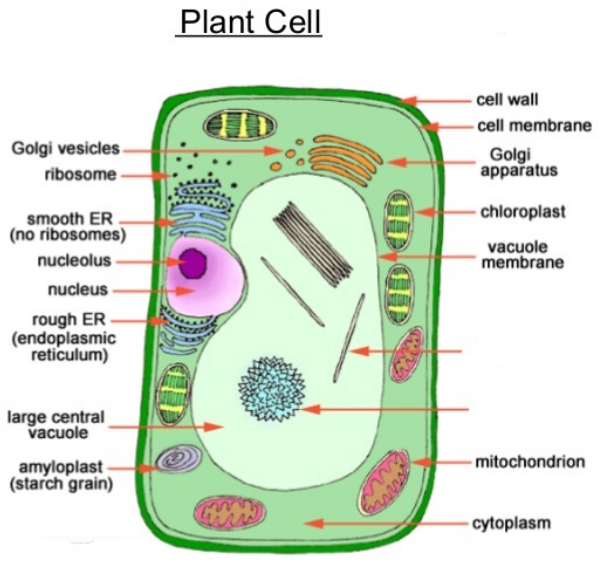
Figure 14: Detailed structure of Plant cell
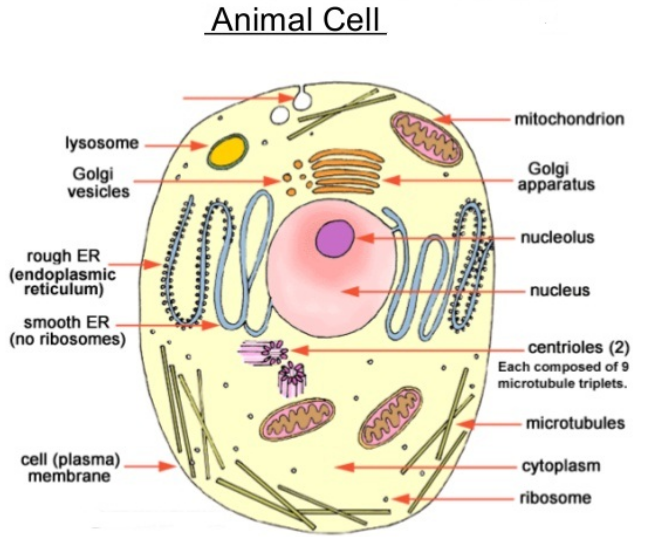
Figure 15: Detailed Structure of Animal Cell
There are some other differences in plant and animal cells that you need to know:
Plants have larger vacuoles while animals have smaller vacuoles. Vacuoles store water or food for plants and even store waste products until they can be discarded. Plants need bigger vacuoles as they cannot move to satisfy their hunger or thirst.
Only plant cells have plastids. They help in manufacturing or storing food.
Only animal cells have centrioles. Centrioles help in the division of cells.
Question 1.
Indicate whether the following statements are True (T) or False (F).
(a) Unicellular organisms have a one-celled body.
(b) Muscle cells are branched.
(c) The basic living unit of an organism is an organ.
(d) Amoeba has an irregular shape.
Answer:
(a) True
(b) True
(c) False
(d) True
Question 2.
Make a sketch of the human nerve cell. What function do nerve cells perform?
Answer:
Function of nerve cells: The function of the nerve cell is to receive and transfer messages, it helps to control and coordinate the working of different parts of the body.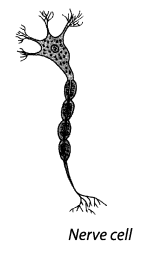
Question 3.
Write short notes on the following.
(a) Cytoplasm
(b) Nucleus of a cell
Answer:
(a) Cytoplasm: The jelly-like substance found between the nucleus and the cell membrane is called cytoplasm. It is made up of basic elements like C, H, O, N. Various other components or organelles, like mitochondria, Golgi bodies, ribosomes, etc., of cells are present in the cytoplasm.
(b) Nucleus of a cell: Nucleus of a cell is an important component of the living cell. It is located at the centre of the cell. It is separated from the cytoplasm by a membrane called nuclear membrane. It contains genetic material.
Question 4.
Which part of the cell contains organelles?
Answer:
Cytoplasm
Question 5.
Make sketches of animal and plant cells. State three differences between them.
Answer: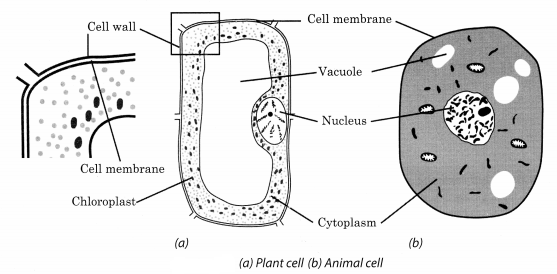
| Plant cells | Animal cells |
| (i) The outermost covering is a cell wall and it is made of cellulose. | (i) The outermost covering of animal cell is the plasma membrane. |
| (ii) Plastids are present in plant cells. | (ii) Plastids are absent in animal cells. |
| (iii) Large vacuoles are present in plant cells. | (iii) No or very small vacuoles are present in animal cells. |
| (iv) It lacks centrosomes and lysosomes. | (iv) They have centrosomes or lysosomes. |
Question 6.
State the difference between eukaryotes and prokaryotes.
Solution:
| Eukaryotes | Prokaryotes |
| (i) Eukaryotes possess membrane-bound organelles. | (i) Prokaryotes lack membrane-bound organelles. |
| (ii) Nucleus of the cell has nuclear membrane. Example: higher plants and animals. | (ii) Nucleus is not bounded by membrane. Example: bacteria and blue-green algae. |
Question 7.
Where are chromosomes found in a cell? State their function.
Answer:
Chromosomes are present in the nucleus. The functions of chromosomes is to carry genes on them and to transfer the character from parents to the next generation.
Question 8.
‘Cells are the basic structural units of living organisms.’ Explain.
Answer:
Different cells combine to form tissues and tissues combine to form organs. Similarly, organs combine to form body. Thus they are termed as the basic structural unit of every living organism.
Question 9.
Explain why chloroplast are found only in plant cells?
Answer:
Chloroplasts are plastids required for the food making process, called photosynthesis, and thus they are only present in plant cells.
Question 10.
Complete the crossword with the help of clues given below.
Across
1. This is necessary for photosynthesis.
3. Term for component present in the cytoplasm.
6. The living substance in the cell.
8. Units of inheritance present on the chromosomes.
Down
1. Green plastids.
2. Formed by collection of tissues.
4. It separates the contents of the cell from the surrounding medium.
5. Empty structure in the cytoplasm.
7. A group of cells.
Solution: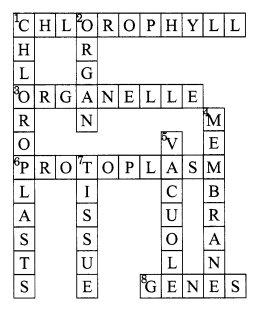
--- Previous Year's Questions ---
Question 1.- Name any three elements which form major part of protoplasm. [MSE (Chandigarh) 2006]
Answer:- Protoplasm is made up of compounds of carbon, hydrogen, nitrogen and oxygen.
Question 2.
- Why are plant cells more rigid in shape than animal cells ? [DAV2006]
- Name the largest and the smallest cells in the living world.
- Tomatoes are red and leaves are green. Why ?
Answer:
- Plant cells are more rigid in shape than animal cells due to the presence of cell wall.
- Largest – Ostrich’s egg.
Smallest – PPLO (Pleuro Pneumonia Like Organisms). - Tomatoes are red because of chromoplasts in their cells.
Leaves are green because of chloroplasts in their cells.
Question 3.- Distinguish between prokaryotes and eukaryotes.
Answer:- Differences:
| Prokaryotes | Eukaryotes |
| (i) The organisms having prokaryotic cells are called prokaryotes. | (i) The organisms have eukaryotic cells are called eukaryotes. |
| (ii) In prokaryotes, there is no nuclear membrane in cells. | (ii) There is a nuclear membrane around the nucleus. |
| (iii) e.g., Bacteria and blue green algae | (iii) e.g., Onion cells and cheek cells. |
Question 4.- Make a sketch of the human nerve cell. What function do nerve cells perform ?
Answer:- Nerve cell — Nerve cells receive messages through dendron and transfer it through axon.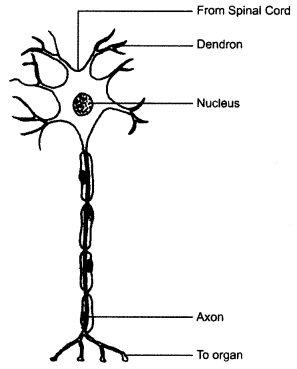
Question 5.- If you boil a hen’s egg, what changes do you observe ?
Answer:- When a hen’s egg is boiled, a white material surrounds the yellow part. White material is albumin which solidifies on boiling. The yellow component is yolk.
Question 6.- What are the functions of the cell membrane ?
Answer:
- It protects the cell.
- It provides shape to the cell.
- It allows materials to enter and leave the cell through the tiny holes.
Question 7.- Give the functions of the following :
- Endoplasmic reticulum
- Golgi complex
- Ribosomes
Answer:
- Endoplasmic reticulum being a network of membranes, provides a large surface area for life functions to take place.
- Golgi complex collects and distributes the substance made in the cell and it synthesises and secretes many materials.
- Ribosomes is the site of protein synthesis.
Question 8.
- What is a cell ?
- Who discovered the cell ?
- Name one microscopic organism.
Answer:
- Living things are made up of tiny living parts known as cells.
- Robert Hooke, an English scientist in 1665 discovered the cell.
- Amoeba is a microscopic organism.
Question 9.- Differentiate between plant and animal cell. [NCT 2011]
Answer:- Differences:
| Animal Cell | Plant Cell |
| (i) Cell wall is absent. | (i) A rigid cell wall is present |
| (ii) Chloroplasts are absent. | (ii) Chloroplasts are present. |
| (iii) Centrosome (a cell organelle that helps in cell division) is present near the nucleus. | (iii) Centrosome is absent |
| (iv) Vacuoles are absent; small in size. | (iv) Vacuoles are present and larger in size. |
Question 10.- Indicate whether the following statements are True (T) or False (F). [NCERT]
- Unicellular organisms have one-celled body.
- Muscle cells are branched.
- The basic living unit of an organism is an organ.
- Amoeba has a irregular shape.
Answer:
- T
- F
- T
- T
Question 11.- Write short notes on the following : [NCERT]
- Cytoplasm
- Nucleus of a cell
Answer:
- Cytoplasm is the fluid present between the cell membrane and the nucleus. Organelles of cells are present in the cytoplasm. These are mitochondria, Golgi bodies, ribosomes, etc. Cytoplasm is made up of basic elements like C, H, O, and N. They are found in the form ef carbohydrates, proteins and water.
- Nucleus of a cell is generally spherical and located in the centre of the cell. Nucleus is separated from the cytoplasm by a membrane called the nuclear membrane. Nucleus also contains nucleolus and chromosomes. Nucleus helps in inheritance and acts as control centre of the activities of the cell.
Question 12.- Describe the variations in shape and size of cells.
Answer:- Cell size. Some cells are very small and visible only with a microscope. Smallest cell is of bacterium, PPLO. An ostrich egg is the largest animal cell. In plants an alga, Acetabularia has a single cell of about 10 cm in length.
Cell shapes are very diverse. Some cells like those of Amoeba and white blood cells continuously change their shape. Most cells, however, maintain their constant shape. The shape of the cell is related to its function.
Question 13.- Name the different parts of the nucleus and give the function of each part.
Answer:
- Nuclear membrane — It separates the nucleus from the cytoplasm. It allows the exchange of substances between the nucleoplasm and the cytoplasm.
- Nucleoplasm — Chromosomes and nucleoli are present in the nucleoplasm.
- Chromosomes — Play an important role in the inheritance of characters from one generation to another.
Question 14.- Give the functions of the following parts of the cell:
- Vacuoles.
- Centrioles.
- Cellulose.
- Plasma membrane.
- Nucleus.
Answer:
- Vacuoles store the chemical products which accumulate within the cell due to the various life functions taking place inside the cell.
- Centrioles present in animal cells are concerned with cell division.
- Cellulose is present in plant cell and provides rigidity and protection to the cell.
- Plasma membrane protects the cell and allows materials to enter and leave through the tiny holes.
- Nucleus controls everything that takes place in the cell.
Question 15.- Explain the mode of cell division in Amoeba. [KVS 2006, 2007, 2008]
Answer:- The cell divides and splits into two parts known as daughter cells. The daughter cells are identical to the parent cell. The nucleus of the parent cell divides into two, followed by the division of cytoplasm. Finally, the two daughter cells are formed.
Question 16- In multicellular organisms, how does growth take place ? [NCT 2005 ; MSE (Chandigarh) 2008]
Answer:- In multicellular organisms, the cells divide for reproduction and also multiply for growth. The increase in the number of cells is brought about by cell division. The cells so produced undergo a change in size and shape and the whole organism shows over all growth.
Give Us Your Feedback/Suggestions
- By Durgesh Pandey
(Eklavya Coaching Institute)
📞 8376976688
H-2/25, Gali No-23, Kunwar Singh Nagar, Nangloi, New Delhi -110041




Comments
Post a Comment